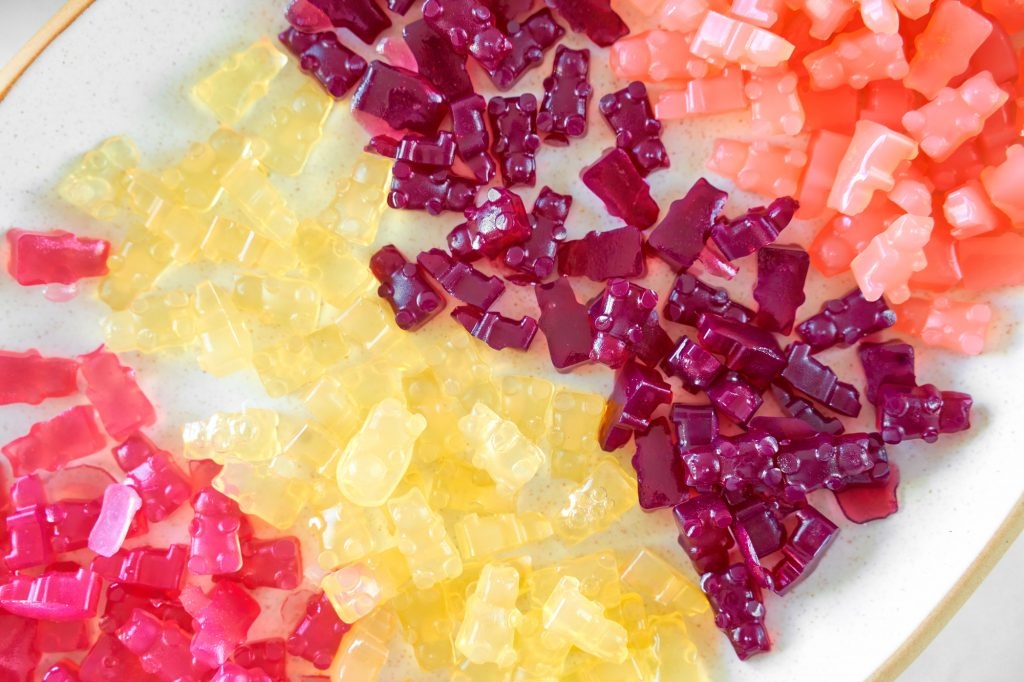If you want to get in on the trend of plant-based candies, you may have initially considered utilizing gelatin as the primary ingredient. While we promote innovation here at nectars, we advise you to reconsider! We have developed a superior replacement for pectin as the key ingredient in vegan gummies.
As customers become more health conscious, they want plant-based gummies that are healthier than those made with gelatin. Pectin is a chemical that occurs naturally in the cell walls of fruits and vegetables. When combined with sugar and water, it can produce a gelatinous texture.
Changing the gelling agent from gelatin to pectin is a terrific approach to creating vegan, plant-based candy. Both gelatin and pectin function by attaching to water molecules, resulting in a gel. In contrast to pectin, which is derived from fruits and vegetables, gelatin requires the usage of animal products.
Pectin is a chemical that occurs naturally in apples and other fruits. It is a complex carbohydrate that gels when sugar is added. As the amount of sugar grows, so does the gelling ability.
Pectin can be substituted for gelatin in many traditional gummy recipes, and it is even easier to deal with.

Why Pectin is the Best Substitute
Pectin is a plant-based alternative that can be used to produce softer, more gel-like gummy candies. Apple peels and citrus peels are boiled down into a concentrated liquid, which is then combined with additional components such as sweeteners and flavorings.
Long chains of sugar molecules that form polymers compose pectin. When heated, these polymers fragment into smaller chains that, when combined with water, form a gel. It gives jams and jellies their structure and texture.
Pectin is a natural, user-friendly component that permits the creation of vegan and vegetarian gummy sweets. Polygalacturonic acid is extracted from fruit peels, apple cores, citrus peels, and other plant components to make pectin. Since ancient times, it has been used as a natural thickener in jams, jellies, and fruit liquids. Due to its high fiber content and low glycemic index, pectin can be used as a dietary supplement for those with diabetes and cardiovascular disease.
Managing the Difficulties of Pectin-Based Gummy Formulation
Pectin is removed from fruit (oranges, apples, plums) during the manufacture of jams and jellies. Pectin can be used as a gelling agent in a variety of applications, including the production of gummy sweets. Pectin-based gummy formulation, however, presents several obstacles that must be solved.
Pectin can degrade when exposed to heat or acid, which poses a problem. This necessitates that it be handled with care during the manufacturing process to prevent harm. In the end product, pectin that has been compromised will not form a solid gel but will instead form loose strands or mushy clumps. Therefore, it is essential to obtain pectin of good quality with low acidity levels so that it may be handled and processed without risk of harm.
Pectin-based gummy formulations are frequently employed because they provide a more consistent texture and mouthfeel, although they can be challenging to deal with. These gummies are more difficult to produce than others since they demand a high degree of homogeneity throughout the entire product as well as the ideal amount of moisture.
It is essential to consider the following while working with a pectin-based product:
1). The relative humidity of your fruit puree should be between 40 and 60%. If it is too low or too high, the final texture of your gummy candy will be affected.
2). Pectin molecules have a greater affinity for certain sugars than others; therefore if you do not use sucrose as one of your main ingredients, you may need to increasethe amount of pectin to ensure that your gummies set properly without losing their shape during drying or cooling.
3). The pH level of your fruit puree will determine the amount of pectin necessary to manufacture gummies with a desirable texture. A lower pH level will require less pectin, whilst a higher pH level will demand more pectin.
Making Fruity Pectin Jelly Candies
Ingredients
- 27g (3 Tbsp) Pectin
- 100g (½ Cup) of Sugar
- 237g (1 Cup) of Water
- 400g (2 Cups) of Sugar
- 112g (½ Cup + 2 tsp) Isomalt
- 1 Flavor Drops
- Food Coloring as Needed
Instructions
- Warm up Sugar and Pectin.
- In a large saucepan with a heavy bottom, stir together the pectin and the initial amount of sugar.
- Slowly pour in the first amount of water while whisking continuously to prevent lumps.
- Whisk in the second quantity of sugar and isomalt until mixed.
- Cook over a medium-high flame until 240 degrees Fahrenheit while continuously whisking. Stir thoroughly before taking the temperature. Thus, you will obtain a more accurate reading from the mixture.
Add Flavor Drops
- Once the desired temperature is attained, mix in the flavor drops and food coloring.
Mold and Cut Procedure
- In a small dish, whisk together the citric acid and the second amount of water before adding to the pan.
- half of the third quantity of sugar is to be used to line your huge silicone mold.
- Two hours of room temperature cooling.
- Once the gummies have cooled, cut them into the appropriate shape and size and roll them in the remaining sugar.
Individual Mold Procedure
- Combine the citric acid and the second amount of water in a small basin, then pour the mixture into a spray bottle.
- To get optimal coverage, spray the citric acid solution from a distance of approximately 10 inches onto the individual silicone molds. About two to three sprays for the entire mold.
- Individualize each mold using the pectin mixture. Once all the holes have been filled, spray the top with one to two additional sprays.
- Two hours of room temperature cooling. For optimal effects, allow 24 hours to pass before removing. Once removed, you can coat these in sugar or set them on a nonstick baking sheet and let them dry for another 24 hours.
- Cover them and store them in a cool, dry location for up to one month.
 One-Stop Solution Manufacturer of Gummy Making Machine
One-Stop Solution Manufacturer of Gummy Making Machine